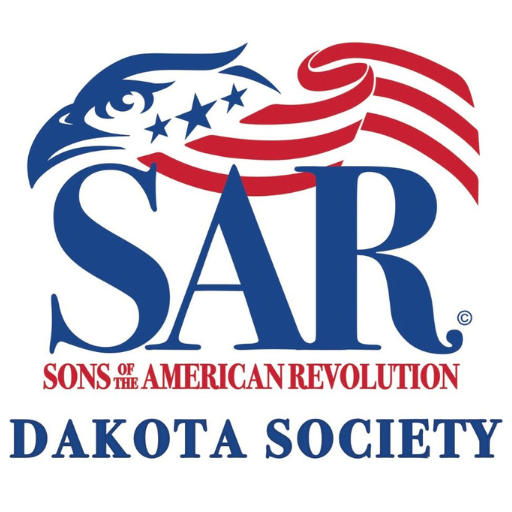The Dakota Legacy
The Dakota Society Sons of the American Revolution (DSSAR) represents the proud heritage of North Dakota and South Dakota. These two states, rich in history and culture, play a vital role in preserving the spirit and values of the American Revolution in the Northern Plains.
We invite all descendants of Revolutionary War patriots and those interested in American history to join us in celebrating the rich heritage of the Dakotas.
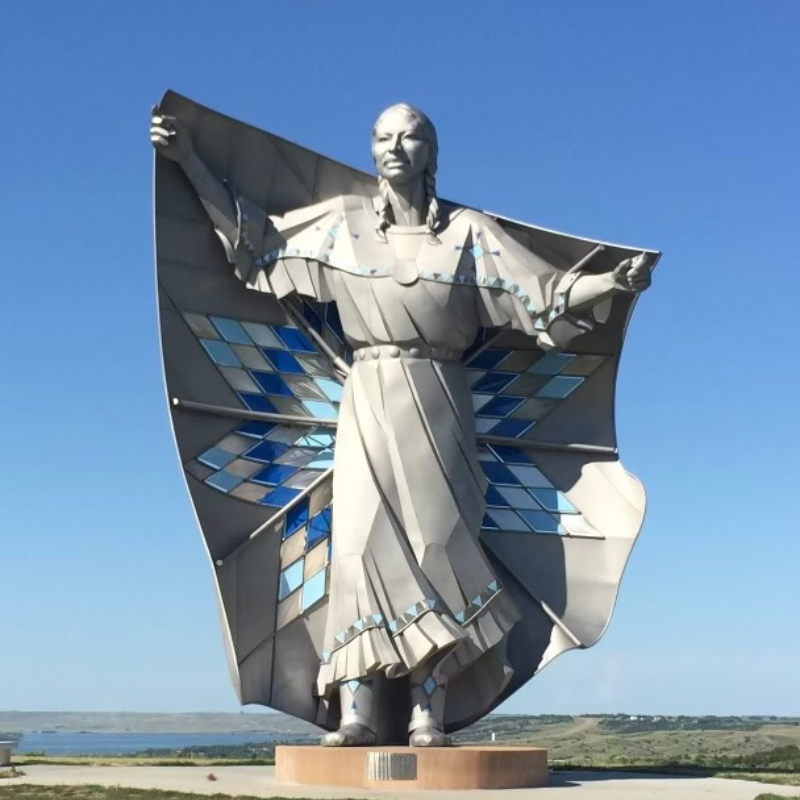
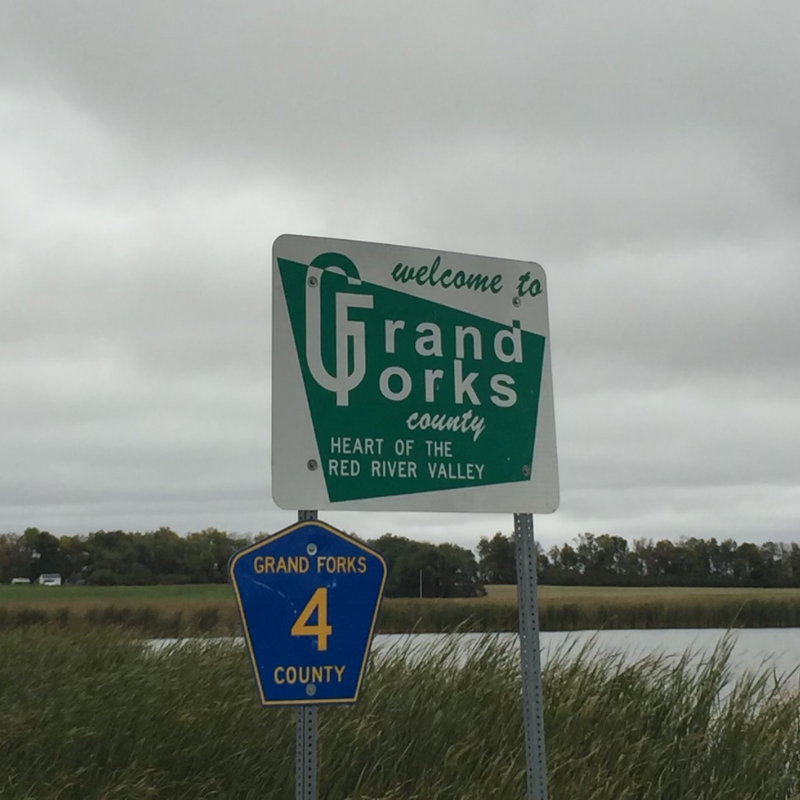
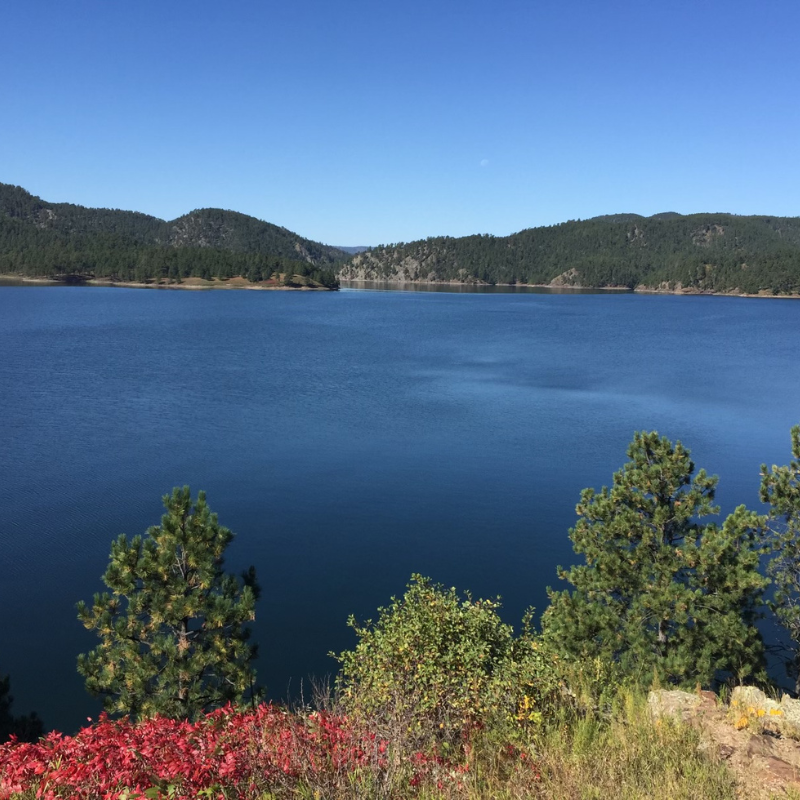
North Dakota
Referred to as the “Peace Garden State,” North Dakota is a land of vast prairies, rich Native American heritage, and pioneering spirit. It’s vast, rugged landscapes are home to a variety of historical sites that celebrate its role in America’s development.
Historical Highlights and Landmarks
Admitted to the Union: 1889
Capital: Bismarck
Largest City: Fargo
The area that is now known as North Dakota was inhabited by Native American tribes that include the Mandan, Ojibwe, Cree, Yankton, and Teton. In the early 18th century, European traders and explorers arrived in the area, and from 1762 to 1802, the region formed part of the Spanish Louisiana.
When railroads made travel to the area more feasible in the late 19th century, more European Americans started to settle throughout Dakota Territory. Conflicts started to form between the residents of the north and south, and in 1887, voters approved splitting the territory in two, creating North Dakota and South Dakota. Both states were admitted into the Union on the same day, November 2, 1889.
Fort Abraham Lincoln State Park
Located in southern North Dakota, Fort Abraham Lincoln State Park is a key military post where Lt. Col. George Armstrong Custer and the 7th Calvary were stationed before their fateful journey to the Battle of the Little Bighorn. The park features reconstructions of Custer’s home, as well as the central barracks, granary, commissary, and a stable.
The park also contains the On-A-Slant Mandan Village, which was established in the late 16th century and inhabited until the 1780’s by the Mandan tribe. Reconstructions of the tribe’s earth lodges have been built in the park and offer visitors a chance to step back in time to the 1700’s.
Five Nations Art Gallery is also located at Fort Abraham Lincoln State Park and helps in maintaining and promoting the heritage and history of Fort Lincoln and other sites in North Dakota through the work of regional Native American artists.
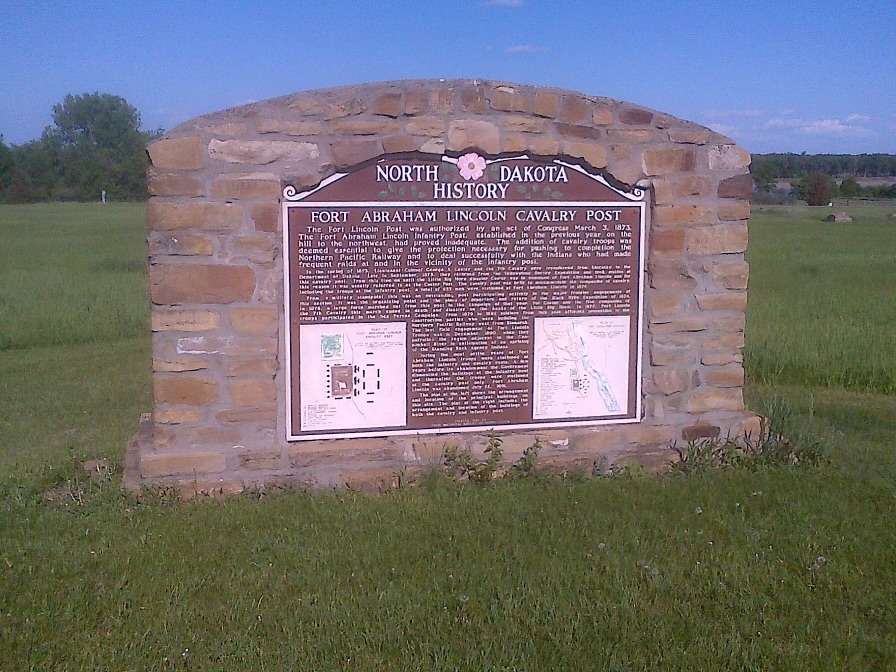
North Dakota Capital
A popular tourist destination in Bismarck, the North Dakota Capitol campus houses parks and monuments that provide information about the state’s history alongside its many government buildings.
The State Library, located in the Liberty Memorial Building, is the oldest facility still on the capitol grounds. It was renovated in 1982 to adhere to modern building codes.
The North Dakota Heritage Center is also located on the Capitol’s campus and is home to the Heritage Center Museum, which houses and displays historical artifacts from around the state. Their collections include millions of artifacts that represent more than 12,000 years of the state’s history, as well as a large paleontology collection that includes gems, minerals, and fossils.
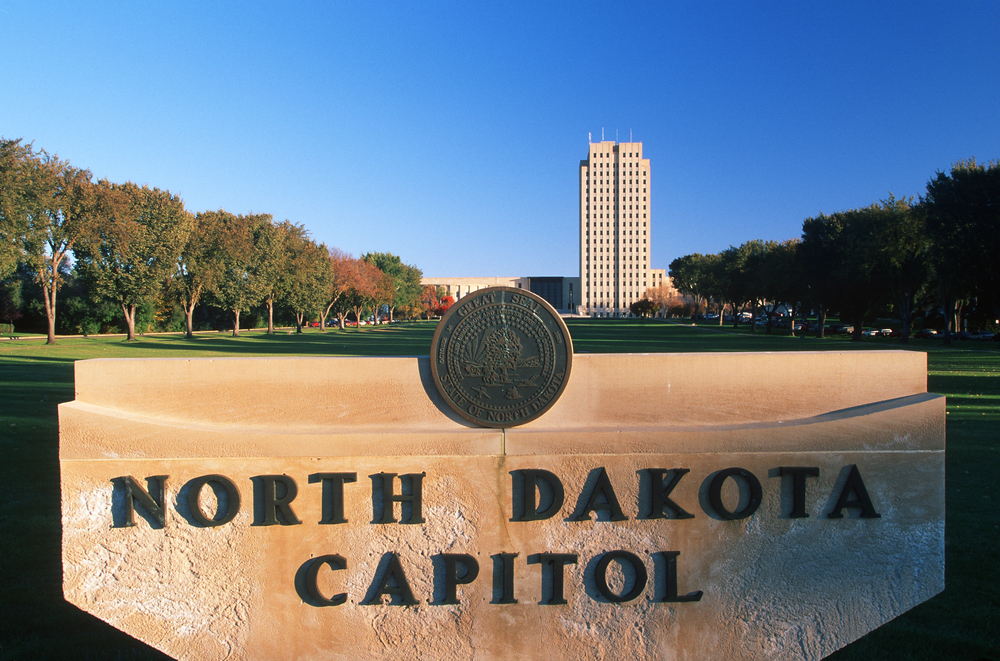
North Dakota Mill and Elevator
The largest flour mill in the United States, the North Dakota Mill and Elevator is also the only state-owned milling facility in the country. The mill began operating in 1922, and today includes 10 milling units, a terminal elevator and a packing warehouse. All facilities are located in Grand Forks and were paid for from operating profits.
A valuable asset to North Dakota, the North Dakota Mill and Elevator Association has contributed over 50% of profits to the North Dakota State General Fund for more than 50 years.
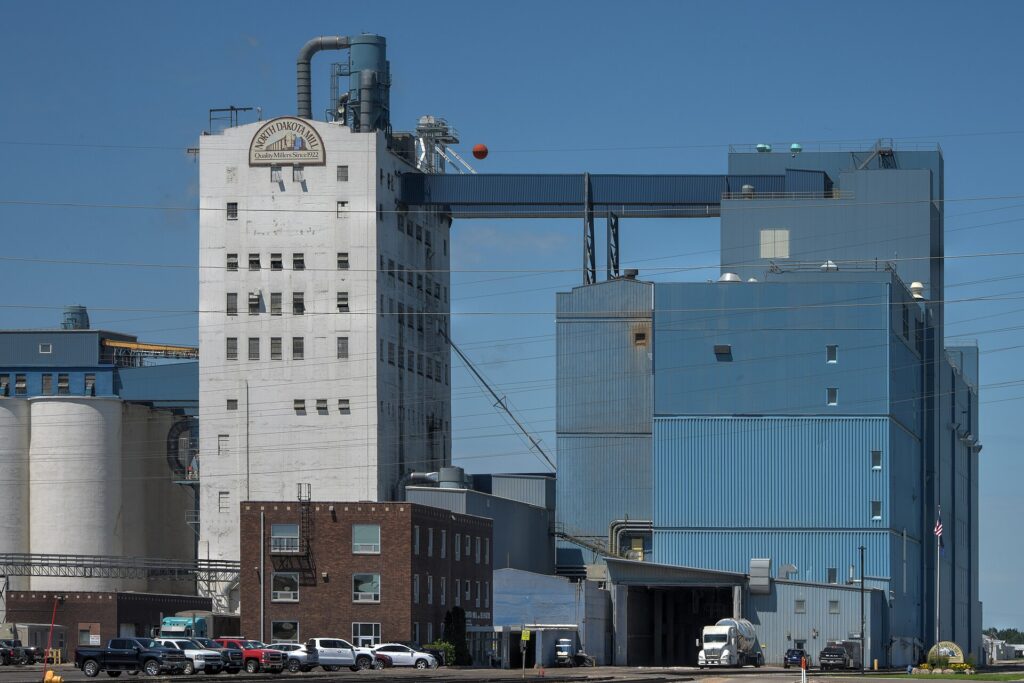
South Dakota
Referred to as the “Mount Rushmore State,” South Dakota is known for its stunning landscapes and patriotic landmarks. The state is a symbol of American ideals and the enduring legacy of the nation’s founders.
Historical Highlights and Landmarks
Admitted to the Union: 1889
Capital: Pierre
Largest City: Sioux Falls
There have been inhabitants in what is now known as South Dakota for thousands of years, with the Sioux being the dominant tribe in the area by the early 19th century. In 1803, the United States purchased the Louisiana Territory, which included most of South Dakota, and Thomas Jefferson organized the Lewis and Clark Expedition to explore the area. The gold rush that began in the Black Hills in the late 1800’s further intensified European-American settlement in the region.
South Dakota was admitted into the Union, along with North Dakota, on November 2, 1889. They were the 39th and 40th states to join the Union. The order of which they were admitted is unknown, as President Benjamin Harrison shuffled the documents so that it was not known which state was signed first.
Mount Rushmore National Memorial
Situated in the Black Hills of western South Dakota, Mount Rushmore National Memorial is a tribute to four great American presidents, symbolizing the birth, growth, development, and preservation of the country. The sculpture, also called the Shrine of Democracy, features 60-foot-tall heads of George Washington, Thomas Jefferson, Theodore Roosevelt, and Abraham Lincoln. It was designed by Gutzon Borglum, who oversaw construction along with his son, Lincoln Borglum.
Construction of Mount Rushmore began in 1927 after federal funding was secured by Peter Norbeck, a South Dakota U.S. senator. The presidents’ faces were completed in 1939; however, construction halted in 1941 due to a lack of funding.
As South Dakota’s top tourist attraction, Mount Rushmore receives over two million visitors per year. The Lincoln Borglum Visitor Center offers guests park information, museum exhibits, and a bookstore. Visitors are also invited to complete self-guided tours, walk the Presidential Trail, and visit the Sculptor’s Studio, which displays Gutzon Borglum’s scale model of the monument.
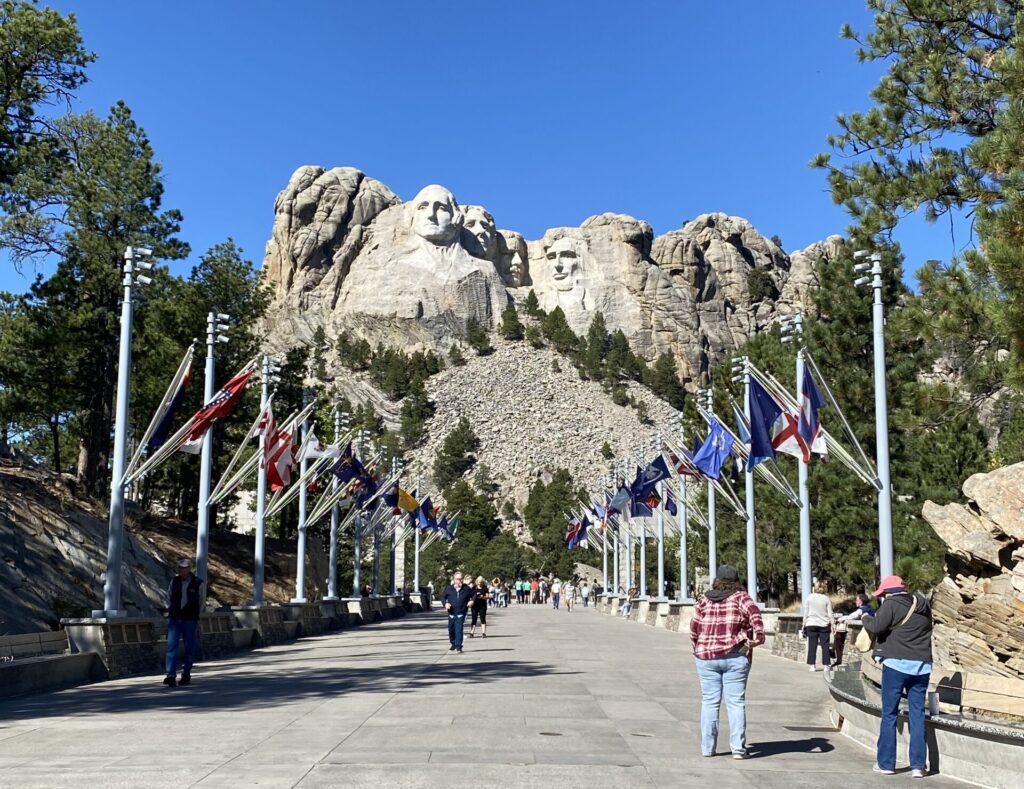
Crazy Horse Memorial
Located in the Black Hills, Crazy Horse Memorial is a monument that depicts the Oglala Lakota warrior Crazy Horse. Construction started on the sculpture in 1948 and continues to this day.
Crazy Horse, who was involved in the Fetterman Fight and the Battle of the Little Bighorn, is one of our country’s most notable Native American leaders. To honor his legacy, Oglala Lakota Chief Henry Standing Bear commissioned Polish-American sculptor Korczak Ziolkowski to create the Crazy Horse Memorial. Once completed, the sculpture will be 641 feet long and 563 feet high. Crazy Horse’s face, completed in 1998, is 87 feet 6 inches tall, while the heads of the four Presidents on Mount Rushmore measure 60 feet tall.
Today, visitors to the memorial can take a bus ride to the base of the mountain, watch a historic video on the monument in one of two theaters, visit the memorial’s museums, and dine at the on-site restaurant. The memorial is also home to the most popular organized hike in the United States, the bi-annual Crazy Horse Volksmarch.
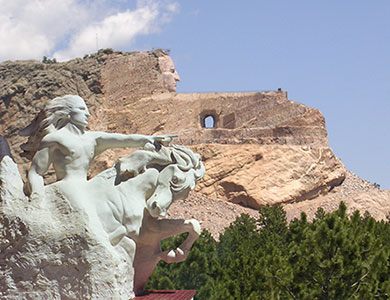
Homestake Mine
Once referred to as the “100 Richest Square Miles” on earth, the Homestake Mine was the largest and deepest gold mine in the Western Hemisphere. During the 126 years that the mine was in operation, miners were able to extract 41 million ounces of gold and 9 million ounces of silver.
The thousands of men and women who worked for the mine and that lived in Lead were instrumental in developing the surrounding community. Although there were 400 deaths recorded at Homestake during its years of operation, it was deemed one of the safest mines in the world by the end of its career.
The mine ceased operations in 2002 due to low gold prices and high production costs.
A valuable asset to North Dakota, the North Dakota Mill and Elevator Association has contributed over 50% of profits to the North Dakota State General Fund for more than 50 years.
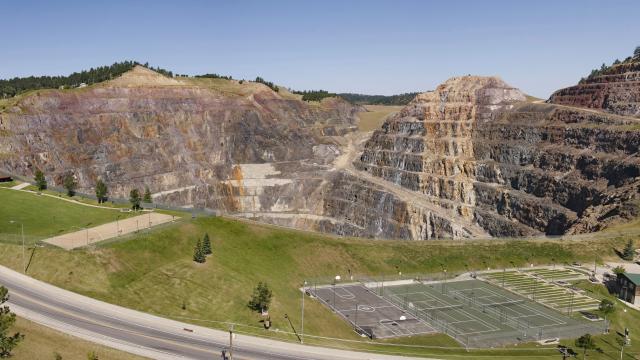
Badlands National Park
The 244,000 acres that comprise Badlands National Park contain one of the world’s richest fossil beds, as well as a beautiful mixed-grass prairie where bighorn sheep, bison, black-footed ferrets, and prairie dogs roam. The park, located in southwestern South Dakota, was established on January 25, 1939, and designated as a national park in 1978.
Badlands National Park, as well as the nearby Minuteman Missile National Historic Site, hold a significant place in the area’s history. The South Unit of the park, called the Stronghold District, was originally an Oglala Sioux reservation and was a ceremonial sacred site for the tribe. The Stronghold District is also home to a former United States Air Force bomb and gunnery range and the park’s highest point, Red Shirt Table, which is at a 3,340-foot elevation.
Visitors to Badlands National Park can enjoy overnight lodging at one of the park’s two campgrounds. The park also contains the Ben Reifel Visitor Center, which offers special programs and museum exhibits. The White River Visitor Center in the South Unit provides information about the region’s rich Lakota heritage.
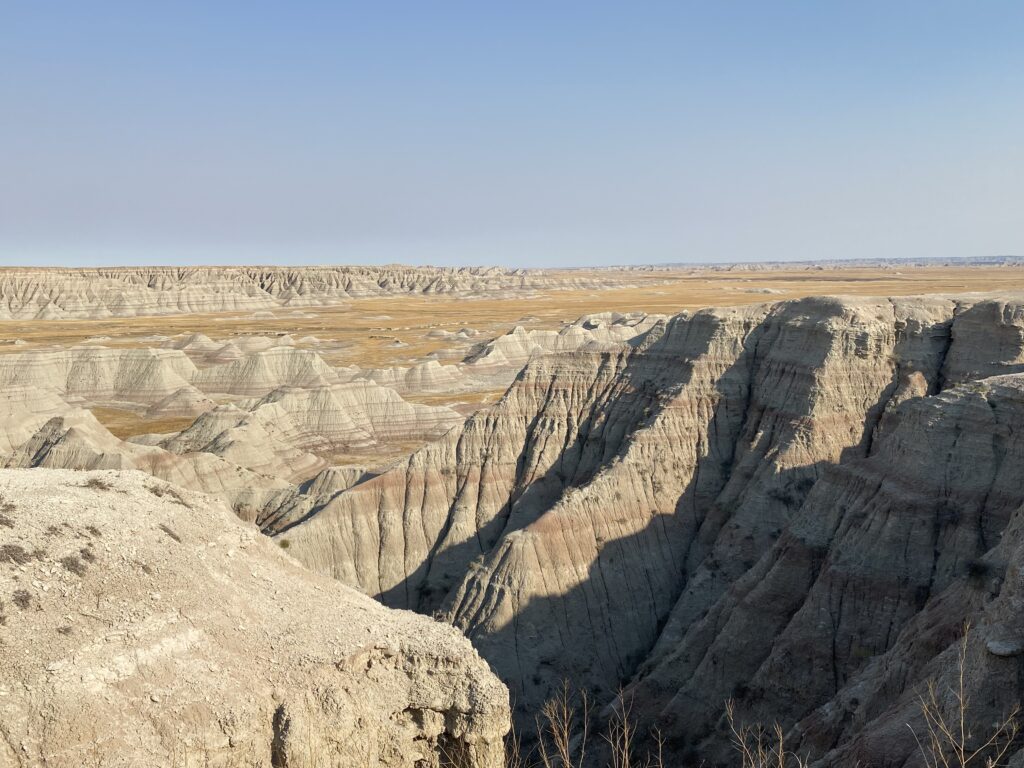
Become a Member
Become a Member
Interested in learning more about the DSSAR and membership eligibility?
Contact us today and we’d be happy to help!
